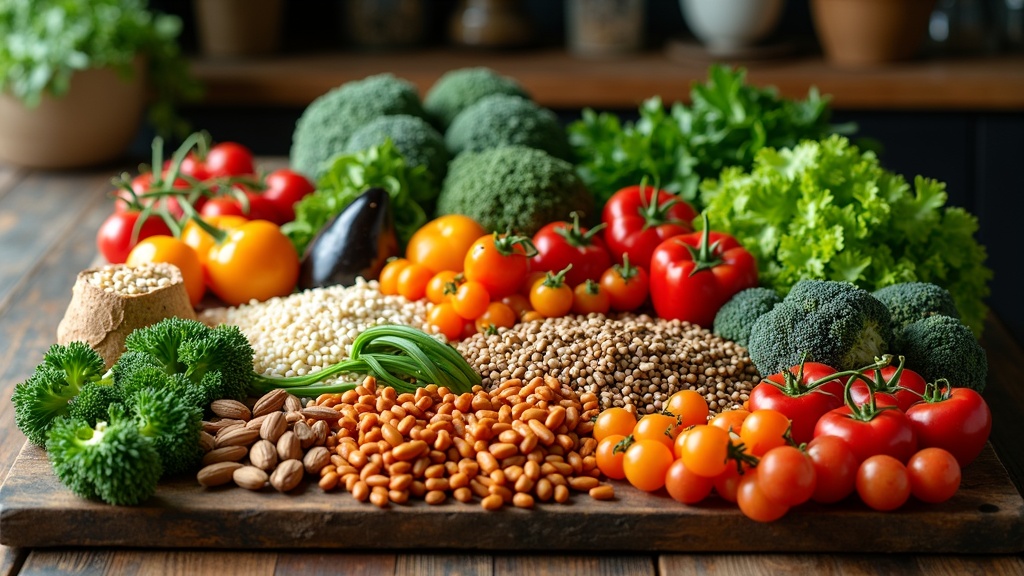Switching to a plantbased diet can feel a bit overwhelming at first, especially with all the buzz and different advice out there.
I wanted to pull together practical tips and advice from nutritionists, longtime vegans, doctors, and foodies who have helped lots of people make this change for the better.
Whether you’re making the transition for health reasons, animal welfare, or just want to try more plantbased meals, these expert insights can help you feel confident about getting started.

Why People Make the Switch to PlantBased Diets
Plantbased diets have become pretty popular, and it’s not just a trend.
A lot of folks are making the switch after hearing about the health benefits, environmental reasons, or concerns about animal welfare.
Registered dietitian Lisa Valente says that the growing number of plantbased options and better information about how to do it right have made it way more accessible than it was even five years ago.
Studies suggest that plantbased eaters may experience things like improved heart health, a lower risk for type 2 diabetes, and even better digestion.
Environmental experts also highlight how plantbased diets use fewer resources such as water and land, so even eating a few more plants each week makes a positive impact.
The plantbased movement is also being featured more on social media, with people sharing their experiences and recipes, which has helped grow its popularity substantially in recent years.
Besides bigpicture benefits, a lot of people just enjoy how much energy they feel when they focus more on fruits, veggies, whole grains, beans, and nuts.
So, if you’re curious, you definitely aren’t alone, and you’re in pretty good company.
In fact, surveys indicate that more people each year are giving plantbased eating a try for various reasons, from better athletic performance to simply loving how colorful and fresh the meals can be.
How to Ease Into a PlantBased Diet
Going allin on day one isn’t the only way to start.
In fact, almost every expert I spoke with recommends making gradual changes.
Stefanie Sacks, a culinary nutritionist, says, “It can be as simple as swapping your regular milk for plantbased milk in the morning or adding a couple of extra veggie sides at dinner.” Small, steady steps add up to real lifestyle changes.
Here are a few practical ways experts recommend easing in:
- Start with familiar meals: Try plantbased versions of stuff you already love, like chili with beans and lentils or pasta with roasted veggies.
- Add, don’t just subtract: Instead of only cutting out meat or dairy, look for new foods to try. Trying new flavors and textures (hello, jackfruit tacos or chickpea curry) keeps things interesting.
- Meal prep is your friend: Prepping a bunch of grains or beans ahead of time makes it super easy to mix things up for lunch or dinner during the week.
- Don’t stress about slipups: Experts agree; if you eat some cheese at a party or grab a chicken sandwich on the road, it’s not a reason to give up. Progress is still progress.
You might also want to check out plantbased blogs, cooking channels, or social media groups.
Many people find new plantbased friends and supportive communities that help keep things fun as they experiment with meals.
Plus, local grocery stores now have more plantbased sections than ever, so exploring new foods is easier.
Your New Staples: Building a PlantBased Pantry
Stocking up on key ingredients can make plantbased eating a breeze.
Dietitians usually suggest starting with whole foods instead of focusing on packaged meat alternatives (though those are fine in moderation).
Registered nutritionist Maggie Moon keeps these basics on hand:
- Rolled oats
- Brown rice, quinoa, and farro
- Dry or canned beans (like black beans, chickpeas, lentils)
- Nuts and seeds
- Frozen veggies and berries
- Plantbased milks (almond, soy, oat, etc.)
Having a few goto flavor boosters, like nutritional yeast, tahini, and a mix of dried herbs, makes it easier to whip up tasty, filling meals you’ll want to eat again.
I rely a lot on jars of salsa and curry pastes when I’m in a hurry.
Fresh citrus, hot sauce, and quickpickled onions add pops of flavor to salads and bowls, making simple meals feel special.
Consider keeping canned tomatoes, wholegrain pasta, and nut butters on hand for quick weeknight dinners.
Challenges You Might Face, and Simple Fixes
Most beginners run into a few common roadblocks when changing their eating habits.
Here’s what experts say about overcoming them:
- Concerns about protein: Almost every plantbased pro hears this question first. Dietitians like Ryan Andrews say to focus on beans, lentils, tofu, seitan, edamame, and tempeh. If you eat a few servings each day, you’ll cover your protein needs without issue.
- Missing certain flavors or textures: Meaty cravings are normal at first. “Try grilling mushrooms or making lentilwalnut taco filling for a hearty bite,” suggests chef Chloe Coscarelli. Don’t hesitate to use spices; smoked paprika, liquid smoke, and soy sauce can make dishes more satisfying.
- Social situations: Eating out or going to friends’ houses isn’t always simple. Planning ahead and bringing a dish you love to share keeps you from feeling left out, and it opens up conversations too.
- Nutrients like B12 and iron: These get talked about a lot. Vitamin B12 isn’t made by plants, so most people take a supplement and make sure to eat fortified foods. Getting enough iron is easier if you pair beans or greens with vitamin C sources, like peppers or citrus, to boost absorption.
Protein on a PlantBased Diet
Worrying about getting enough protein is common when making the switch, but it’s actually easier than most people expect.
Plantbased sources include tofu, tempeh, chickpeas, peas, lentils, quinoa, and even broccoli.
Many experts recommend aiming for variety and balancing protein sources across your meals.
If you’re into working out or have higher protein needs, soy products and beans can easily be built into your breakfasts and lunches.
Getting creative can help too; try blending white beans into soups or adding hemp seeds to oatmeal for extra protein.
B12 and Iron: How to Get What You Need
Plantbased experts agree on the importance of B12 supplements or fortified foods, since B12 isn’t naturally present in plant foods.
Iron from plants gets absorbed better when you eat vitamin C-rich fruits and veggies.
Some people choose an iron supplement, but most get enough with a balanced, wellplanned diet and regular checkups.
Reading food labels and talking to your healthcare provider helps make sure you stay on track.
Leafy greens, lentils, dried apricots, and pumpkin seeds are especially good plantbased iron sources, and citrus, strawberries, or bell peppers can give a boost to iron absorption.
Making Your Meals Exciting
One thing that keeps plantbased eating fun is the variety.
With thousands of fruits, veggies, grains, legumes, and spices to choose from, you gain access to creative new recipes.
Chef Bryant Terry says, “Experiment with global flavors.
Curries, stirfries, and grain salads make vegetables and beans shine.”
Swapping meal themes each week keeps things fresh, and using leftovers in wraps or salads saves time and money.
Trying out different world cuisines—like Mediterranean, Indian, or Mexican—can introduce unexpected flavors you may not have eaten before, and it can be a fun way to cook together with friends or family.
I like making bowls with brown rice, black beans, roasted sweet potatoes, avocado, salsa, and crunchy greens.
Changing up the sauce or seasoning makes each version feel new even if the ingredients are similar.
Roasted chickpeas add crunch to salads, and homemade hummus works as a dip or sandwich spread.
The possibilities keep things interesting and delicious all week.
PlantBased Diets for Families and Kids
Switching the whole family over can be a challenge, especially with picky eaters.
Pediatrician Dr. Reed Mangels reminds parents to include foods that are familiar to kids and to make meals interactive; for example, taco bars or makeyourown pita pizzas. Other familyfriendly tips include offering fruit as a treat and adding nut butters, seeds, and wholegrain toast for easy, tasty energy.
If you’re feeding children, talking with a dietitian or pediatrician can give you extra peace of mind.
Cooking together can also help kids get invested and interested in new foods, and letting them choose toppings or mix their own salads makes meals feel special.
Common Questions About Transitioning to a PlantBased Diet
Here are a few questions people ask when starting their plantbased adventure:
Is it expensive to eat plantbased
Answer:
It doesn’t have to be.
Beans, rice, oats, and frozen veggies are budgetfriendly and can be even cheaper than buying meat and cheese.
Shopping sales and planning meals helps stretch your food budget.
Using seasonal produce and cooking from scratch can cut costs further, and making larger quantities to freeze portions for later is another helpful strategy.
How do you deal with cravings for nonplant foods?
Answer:
Everyone gets cravings sometimes.
Experts often suggest satisfying them with plantbased versions or building meals around flavors and textures you love.
Over time, your taste buds do change, and cravings tend to fade.
Some people recommend occasional small treats to avoid feeling deprived, while others find that trying new recipes satisfies those cravings in healthier ways.
How do you explain your new diet to others?
Answer:
Whether it’s at family gatherings or work lunches, honesty is a good policy.
Let people know it’s something you’re trying for your health, values, or because you feel better eating this way.
Most people are pretty understanding once you explain it’s something you feel good about.
Keeping conversations positive and sharing new favorite recipes can help spark interest and create supportive connections.
Wrapping Up
Transitioning to a plantbased diet doesn’t need to be a dramatic, allornothing change.
Taking it meal by meal, stocking up on pantry staples, and staying openminded make the process way easier.
Experts agree that focusing on the foods you can eat, rather than what you’re cutting out, keeps you feeling satisfied and motivated.
Start with small swaps, don’t stress about perfection, and you’ll probably stumble upon new favorites you didn’t expect.
Plantbased eating is all about experimenting, enjoying vibrant food, and eating in a way that feels right to you.
Over time, you’ll be able to track down the flavors and ingredients that make plantbased meals truly eye-catching and satisfying.
